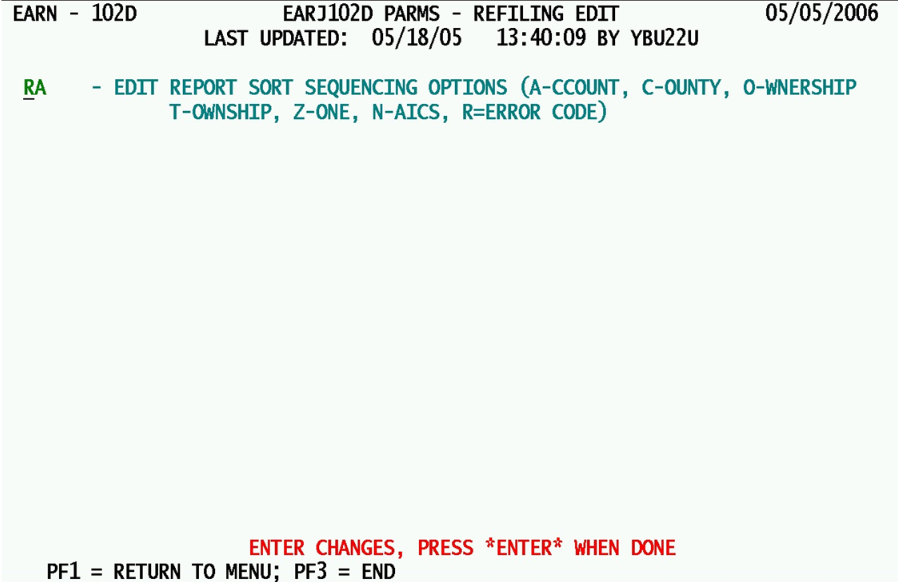14 job 102d perform refiling batch edits
Job 102D - Perform Refiling Batch Edits
The 102D job performs refiling edits used to verify that refiling records are ready for mailing (primarily that they have legitimate addresses and NAICS codes present) following the creation of the Refiling File at the beginning of the year. The only parameters are the report sequencing options which can be up to five alpha characters selected from a list of seven options. These are described below.
1. Edit Report Sort Sequencing Options - From 1 to 5 alphabetic characters used to resequence the Refiling Edits Report for convenience. The options (which will be applied in their selected order) are as follows:
- a. ‘A’ (“Account”) - This option permits sorting by the U-I account number and reporting unit number (a.k.a., the SESA ID). Note that if this option is selected, any subsequent selections will be completely ineffective, since the SESA ID is fully identifiable as a sorting mechanism in and of itself.
- b. ‘C’ (“County”) - The “C” option uses the County FIPS code to resequence the report output.
- c. ‘N’ (“NAICS”) - This sorting character will sort the report data by NAICS code.
- d. ‘O’ (“Ownership”) - This option resequences the output by the first digit of the ownership code, but uses descending sequencing so private ownership accounts will appear first, and Federals will appear last.
- e. ‘R’ (“Error Code”) - The “R” option parallels the action of the EXPO edits “R”, using the most significant error code number as the sorting criterion. The term “most significant” is equated to lowest numbered for this sort option.
- f. ‘T’ (“Township”) - This option uses the New England township code (or an alternative value stored in the first three digits of the quarterly “Zone” field of the Micro File) to sort the Refiling Edit Report.
- g. ‘Z’ (“Zone”) - This sort value resequences the report by the full 4-digit sub-county zone code (although this field is not used in refiling processes).
The 102D job needs to be run at the beginning of the refiling cycle (generally in October), after the new year’s Refiling File has been created through the 100A job. Although it is an on-demand job (designated by the “D” suffix), it should not be needed throughout the year, but only until the refiling data are ready for their initial mail-out.
Related Links
